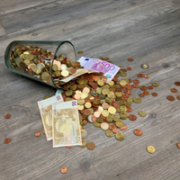How do Foreign currency exchange rates work?
11-02-2021 | treasuryXL | XE |
For the first question, you can easily do that on Xe’s Currency Converter. The second question? That’ll take a little more time to understand. We’ll try to make it as quick (and painless) as possible for you!
Currency exchange rates: what they are, and how they work
Exchange rates indicate how much your currency is worth if exchanged into a foreign currency. For example, on December 30, 2020, 1 U.S. dollar was equal to 0.748067 British pounds.
Currency exchange transactions happen 24 hours a day, seven days a week in a market that transact over $6 trillion a day. Exchange rates are constantly fluctuating as foreign currencies are actively traded. Various trading activities boost or lower the values of different currencies.
Institutions and traders buy and sell foreign currencies in the global market 24 hours a day. For a trade to be completed, at least one currency must be exchanged for another. For example, in order to buy the U.S. dollar another currency is required for payment. Whatever currency is used, either the euros, yen, or Canadian dollar, etc. will create a currency pair. For example, if you use U.S. dollars (USD) to buy the Japanese yen, the exchange rate will be for the JPY/USD pair.
How are international exchange rates determined?
Foreign exchange rates are determined in various countries using two key methods: flexible and fixed rate. While flexible exchange rates are constantly changing, fixed rates hardly ever change. (Though you probably figured that out from their names.)
Flexible exchange rates
The foreign exchange market or forex determines most currency exchange rates. These rates are known as flexible exchange rates. These rates are constantly changing from one moment to the next. Flexible exchange rates are influenced by the open market through demand and supply on world currency markets. As such, if the demand for a specific currency is high, the value of such currency will most likely increase. But if the demand of a particular currency falls, its value in the foreign exchange market falls too.
Most major global currencies often have flexible exchange rates. These include the British pounds, Mexican pesos, European euros, Japanese yen, Canadian dollars, and others.
The government of these countries and their central banks do not interfere to keep their exchange rates fixed. Though their policies can affect rates in the long run, for most of these nations their governments can only impact and not regulate exchange rates.
Fixed exchange rates
Countries that use fixed or pegged foreign exchange rates do so via their central bank. These countries set their rate against another major world currency like the United States dollar, euro or yen.
To regulate and maintain the fixed exchange rate, the government of these countries buy and sell their own currency against the foreign currency to which it is pegged. Only the governments of these countries can determine when their foreign exchange rates should change.
Countries that use the fixed exchange rate method include Saudi Arabia and China. These countries ensure that their central banks have sufficient amounts of money in their foreign currency reserves to determine the amount their currency is worth in the foreign exchange market.
Okay, but what causes the rates to change?
Rates change when currency values change. There are several key factors that affect the movement and values of local and foreign currencies. These include three key factors known as:
-
Interest rates
-
Money supply
-
Financial stability
Due to these factors, the demand for a particular country’s currency, depends on what is happening in that country.
Interest rates
The interest rates a country’s central bank is setting is a key factor that will influence the country’s exchange rate. Higher interest rates have positive impacts on the value of the country’s currency. Investors are more likely to exchange their currency for one with higher interest rates, and then save it in that country’s bank to benefit from the higher interest rate.
Money supply
The money supply made available by a country’s central bank can influence the value of the currency in the foreign exchange market. For example, if there is too much money in circulation, there will be too much of it in exchange for very few goods.
Currency holders will most likely bid up the costs of goods and services which will trigger inflation. In the event that too much money is printed and in circulation in a particular country, it triggers hyperinflation and drives down their currency value in the foreign exchange market. Cash holders prefer to invest in countries with little or no inflation.
Financial stability
The financial stability and economic growth of a country can affect its foreign exchange rates. Investors are more likely to buy goods and services from countries with a strong and growing economy. This means they will need more of such a country’s currency to buy from them. this will increase the demand for such currency and ultimately boosts its value in the foreign exchange market.
If the economy of the country is in a bad shape, investors are less likely to trade with them. Investors are only interested in trading with countries that can provide gains from holding government bonds in that currency.
Are you curious to know more about XE?
Maurits Houthoff, senior business development manager at XE.com, is always in for a cup of coffee, mail or call to provide you detailed information.
Visit XE.com
Visit XE partner page












